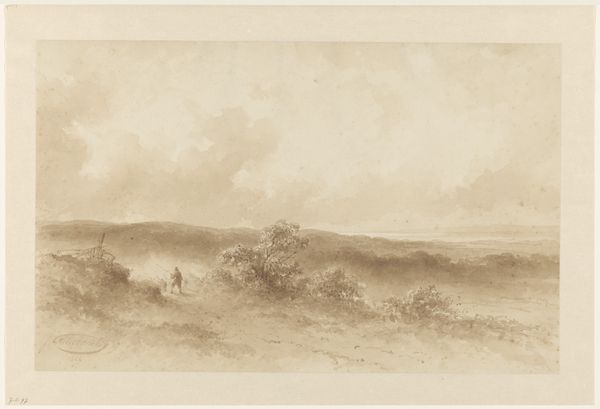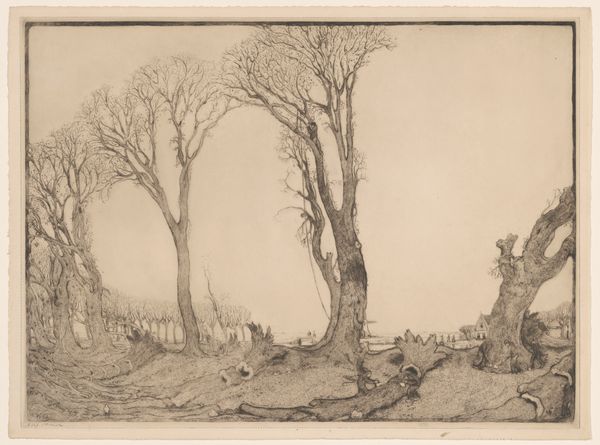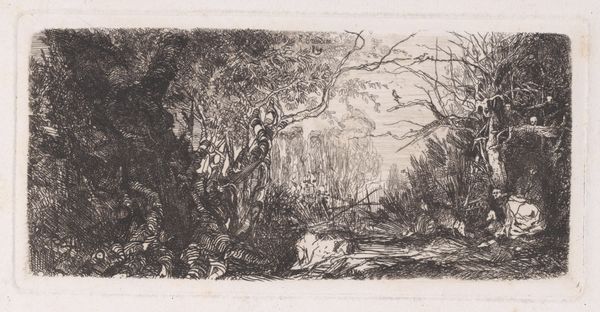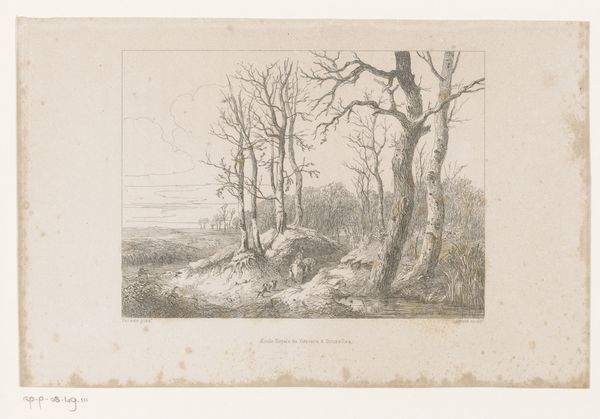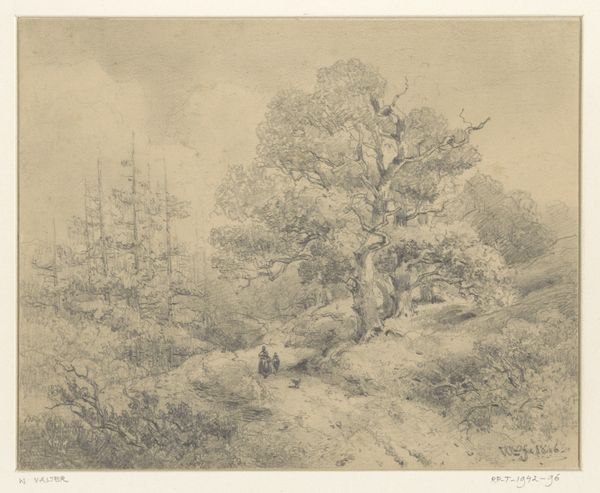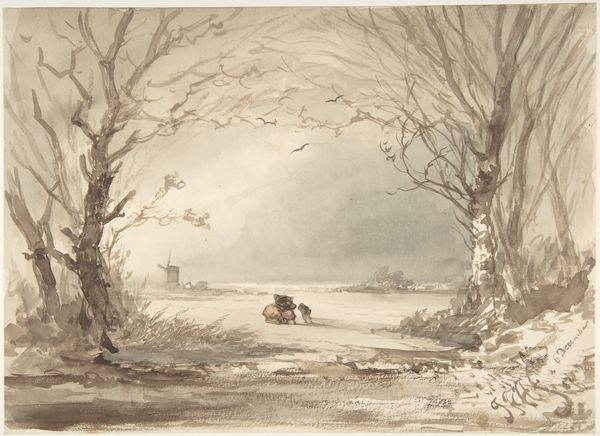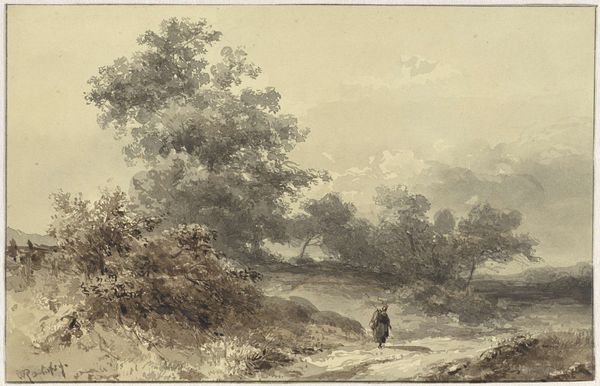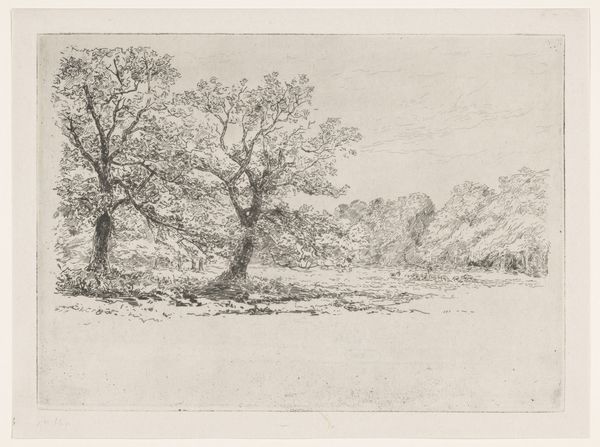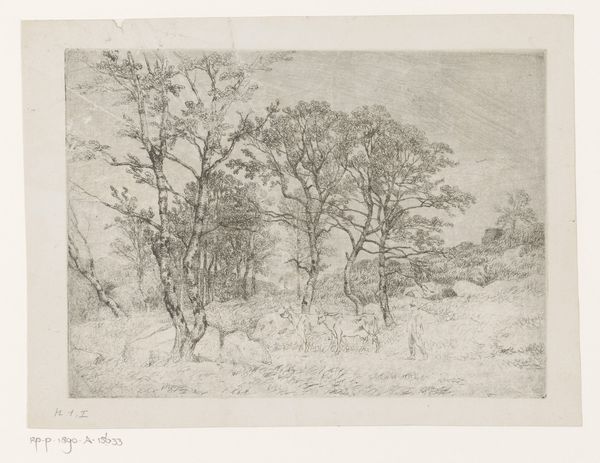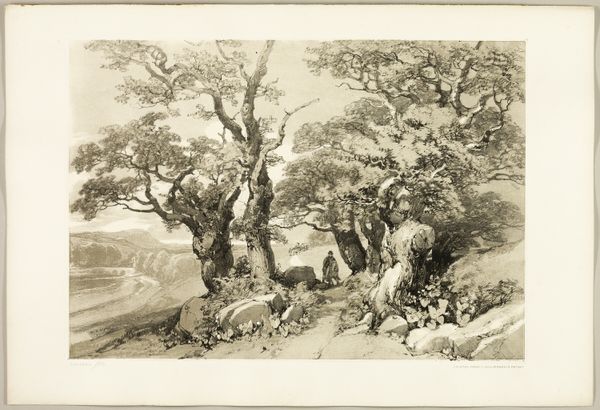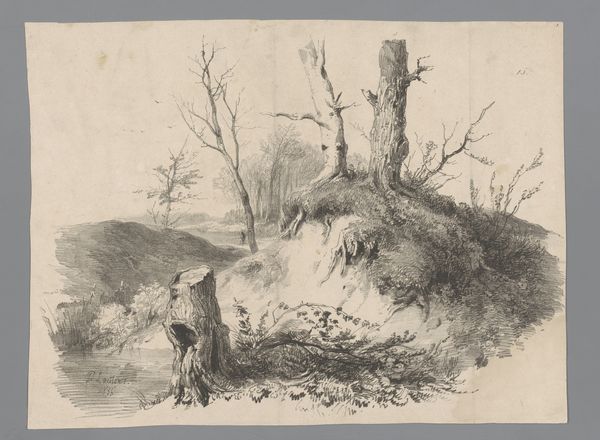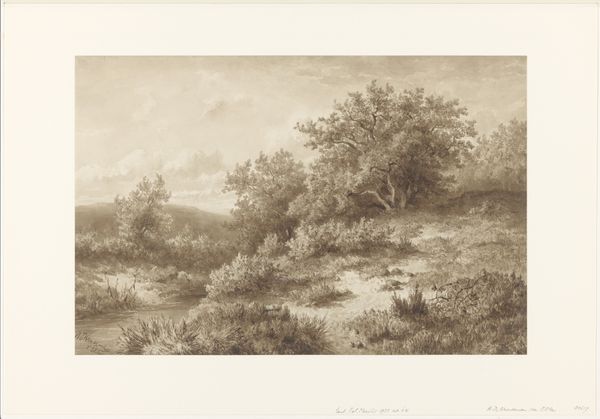
#
natural shape and form
#
natural tone
#
organic shape
#
live laugh love
#
natural light
#
natural colour palette
#
nature heavy
#
natural palette
#
watercolor
#
shadow overcast
Dimensions: height 288 mm, width 423 mm
Copyright: Rijks Museum: Open Domain
Curator: What a study in contrasts and monochrome. The artist's commitment to grayscale compels the viewer to look closely. Editor: It is undeniably bleak, that range of greys giving an almost haunting feel. One can almost feel the chill. But let’s give our audience some context. This watercolour is titled "Winterlandschap met gaande houtsprokkelaar", or "Winter Landscape with a Wood Gatherer". It comes to us from Johannes Franciscus Hoppenbrouwers around 1850. It resides here in the Rijksmuseum. Curator: Right, let’s delve into the artistry at play. I notice that Hoppenbrouwers focuses primarily on line and the wash to suggest volume rather than contour. Look how the thin application in areas lends itself to depth in composition. This allows negative space to imply elements further in the distance, adding considerable scale. Editor: It’s interesting you should say ‘depth’. To me, this highlights the role of weather in shaping everyday life in mid-19th century Holland. This wasn't some idyllic landscape; for many, winter was about mere survival. Gathering firewood in those conditions… a tough existence captured with almost photographic fidelity, yet still somewhat romantic. Curator: Photographic fidelity is interesting here, I suppose. But, I do wonder: the formal qualities elevate this beyond a simple record. Note the composition—the strategic placement of the figure against the receding landscape creates an incredibly sophisticated use of perspectival recession, using only shades and material. The texture implies both presence and isolation, no? Editor: I wouldn’t disagree about sophistication in application. The near-monochrome does make this landscape almost hyper-real in capturing how overcast skies dull color and cast long shadows on water. Yet the choice to make the figure so small relative to nature… perhaps hints at humanity's relative helplessness against larger forces. Even in industrialising Europe. Curator: Isolation certainly resonates, as do muted tonal values which highlight essential geometries. Notice especially in that striking tree. It functions almost like semiotic marker. It stands almost devoid of leaf, against the house that also seems as barebones a rendering as possible while retaining basic figuration. A strong contrast here to traditional renderings. Editor: Well, on the sociohistorical front: scarcity certainly impacted art, yes? The way the common labour is given prominence suggests emerging ideas of a new democratic sentiment. What do we take from this artist calling attention to the margins of society so eloquently during a transitional age of both social upheaval, revolution and innovation? Curator: Ultimately, Hoppenbrouwers’ ability to manipulate watercolour achieves a stark atmospheric landscape whose subtle organization can provoke considerable thought. Editor: Yes, this landscape serves as a document and also artistic record to remember—it calls for careful historical awareness in a quickly modernising Holland.
Comments
No comments
Be the first to comment and join the conversation on the ultimate creative platform.
